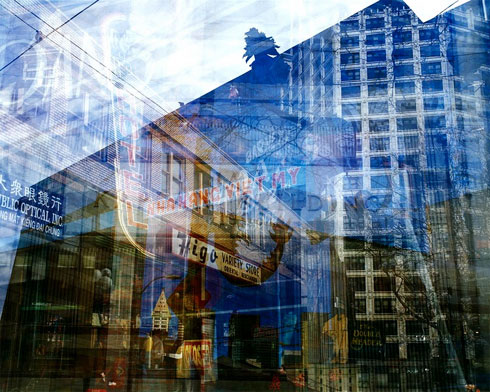The experience of being and working in a foreign city is like a juxtaposition of realities. It’s difficult not to impose what you already know from before, to the here, now and the Other. Photo by Doug Keyes, from his Becoming Language series.
In 2004, I had the opportunity to network and meet up with about 33 Swedish leaders (CEOs, MDs, regional managers, managers etc.) and their Asian counterparts. They all worked in Swedish related or Swedish owned organizations in Singapore, some of which being Ikea (I think almost all Singaporeans have something from Ikea these days, they have just opened a 2nd megastore on that tiny city island!), Sony Ericsson, Kvaerner E&C and ASSAB.
